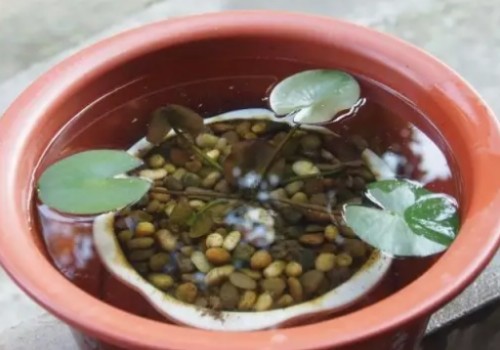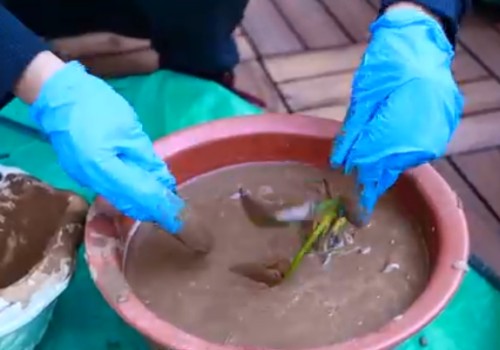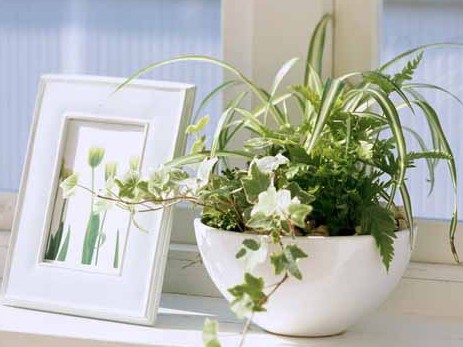How to plant water lilies after germination
Water lilies can reproduce seedlings by sowing, but because their seeds are tightly wrapped in a hard shell, it is often difficult to sprout smoothly on their own, even if they can put out buds, the budding rate is also very low. Therefore, we can use artificial break means to break the shell of the seed, thus greatly increasing the chance of budding.

However, in order to improve the budding rate, it is usually recommended to soak seeds and accelerate germination. Generally put it in clear water, provide temperature protection, often can let it sprout smoothly. When the buds grow to a certain length and expose some roots at the same time, you can choose a suitable weather to plant them in the mud. So, how to plant water lilies after sprouting?
First of all, we need to choose a flowerpot of the right size, because it is a growing environment where soil and water coexist, so there is no need to use a flowerpot with a water outlet at the bottom, and even if there are holes in the bottom, it needs to be plugged to avoid soil erosion in the basin. It is recommended that people use plastic pots or pottery pots to raise water lilies, and pond mud is recommended as a cultivation substrate.
If there is no way to obtain rich and soft pond mud, the original suggests to use pastoral soil and yellow sand, according to the proportion into the basin, half of the basin is appropriate. Then soak in clean water, mix the pastoral soil and yellow sand well, and finally precipitate for a few hours. Of course, if you can soak for more than 1-2 weeks, the quality of basin mud is higher, and the effect of planting water lilies will be higher.
However, when planting water lilies in mud, generally do not mix fertilizer in the substrate. After all, the seedlings are too immature, and the absorption capacity of the roots is limited. Even if the base fertilizer is put in, it is difficult to absorb a large amount of water lilies. On the contrary, it is easy to burn out the roots and seedlings. After making the pond mud, gently press the sprouted water lily seeds with shells into the soft basin mud, only need to expose the buds outside the basin mud.
As the current root buds of water lilies are still very immature, the operation must be carried out in strict accordance with the standard process carefully, otherwise the root buds may be damaged and the growth or even survival of seedlings may be affected. After entering the mud, it is recommended to cover the surface of the basin mud with perlite or gravel, so that when adding water, you can avoid washing out the basin mud and flushing out the seeds at the same time. And the water surface should be exactly the same as the tender leaves or bud tips of water lilies.
Generally speaking, after the buds of water lilies are planted in mud for 2-3 weeks, they will have a certain ability to purify water. During this period, we also need to add water in time according to the growth height of the seedlings. At the same time, some mature organic fertilizer can be buried in the basin mud as base fertilizer, so that the seedlings can get more nutrients and maintain exuberant growth. Of course, the seedlings also need to provide sufficient light during the growth period to ensure smooth ventilation.
Time: 2019-05-23 Click:
- Prev

How to grow the water lilies I just bought?
Water lilies are very popular, not only because they have beautiful flowers, but also because they are very easy to raise aquatic plants. If raised in pots, the ornamental effect is very good. And for many people who are afraid of trouble, they can buy ready-made seedlings and plant them directly.
- Next

Matters needing attention in the display of family bonsai flowers
In addition to the luxury of furniture and furniture, the embellishment of potted flowers is actually more important than a comfortable and beautiful home. Many families have even bought a lot of expensive bonsai, but many people have no idea about the display of indoor bonsai. Remember, don't misplace the potted flowers at home.
Related
- Fuxing push coffee new agricultural production and marketing class: lack of small-scale processing plants
- Jujube rice field leisure farm deep ploughing Yilan for five years to create a space for organic food and play
- Nongyu Farm-A trial of organic papaya for brave women with advanced technology
- Four points for attention in the prevention and control of diseases and insect pests of edible fungi
- How to add nutrient solution to Edible Fungi
- Is there any good way to control edible fungus mites?
- Open Inoculation Technology of Edible Fungi
- Is there any clever way to use fertilizer for edible fungus in winter?
- What agents are used to kill the pathogens of edible fungi in the mushroom shed?
- Rapid drying of Edible Fungi

